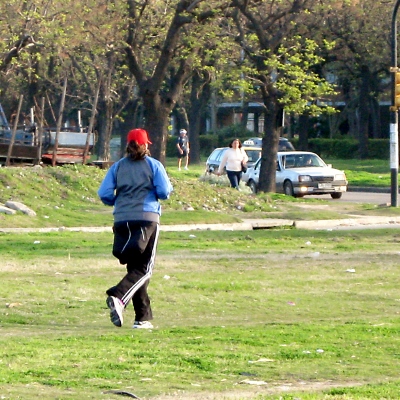 We’re fighting a battle. Let me give you a few of the grim statistics about us, you and me, my fellow Americans.
We’re fighting a battle. Let me give you a few of the grim statistics about us, you and me, my fellow Americans.
1) Stress. We’re the most stressed out population on planet earth: 77% (that’s three quarters!) of Americans experience physical and psychological symptoms related to stress in a given month (Source: American Psychological Association study, 2007).
2) Obesity. Among Americans age 20 and older, 149 million are overweight or obese (BMI of 25.0 kg/ m2 and higher). One in three children between ages 2 and 19 are overweight or obese. (Source: Health, United States, 2010: With Special Feature on Death and Dying. NCHS, 2011).
3) Diabetes. Our incidence of diabetes is at an all time high, and climbing in direct proportion to our increasing waistlines. And the complications associated with diabetes are costing our nation billions of dollars and too many lives.
4) Meds. The use of Vikodin, Zoloft, and Ambien now surpass the use of daily multiple vitamins. We take meds for our stress, for our heart disease, for our sadness, and for our insomnia. Our National Cry has become, as Huey Lewis said “I Want A New Drug.â€
So that’s the bad news. The good news is that millions of Americans are discovering a new weapon in their personal war against stress, depression, obesity, insomnia, and other afflictions. Actually, it’s not new, it’s thousands of years old. Yoga is your best bet in the battle of life and optimum health.
According to Timothy McCall, M.D. in his book Yoga as Medicine, “Yoga appears to be effective as a treatment in a wide variety of health conditions, ranging from alcoholism to migranes to smoking cessation.†He continues, “Imagine how much you’d be hearing about a new drug that could accomplish even a fraction of what yoga can.â€
Contrary to the widely held belief of many non-yogis, yoga is not only for fit, flexible, Gumby-like people. Yoga is for all kinds of people…old, young, people with joint stiffness, people with disabilities, athletes, soccer Moms. Even those who are bound to a wheelchair can benefit from the breathing and relaxation techniques taught in yoga. “What the practice of yoga does is challenge you wherever you need it, transforming liabilities into strengths, making you a more balanced person†says McCall.
Let’s look at five common health issues, and for each condition, one way yoga can help.
1) Headaches/Migraines: Breath Awareness. Sit in a comfortable position with a straight spine. The idea here is to calm the nervous system, so close your eyes and maybe even dim the lights. Begin to breathe through your nose as if you are breathing through a straw. Long, slow inhalation, long slow exhalation. Pause briefly at the end of the exhale and sense the quiet calm there. Continue breathing this way for five minutes, noticing the quiet calm in the pause after you exhale. You can also try self-acupressure, pinching the webbing between your left thumb and left forefinger with your right hand.
2) Anxiety/Panic Attacks: Sandbag Breathing. Lie on your back and place a pillow or folded blanket below your head. Take a few breaths, and then place a 10-pound sandbag or a bag of rice or beans on your abdomen. As you breathe in, let your abdominals expand to lift the bag. As you exhale, let the weight of the bag help you press the breath out. Continue this breathing pattern for five minutes. The weight on your belly teaches you to focus on the exhalation, the part of breathing that is most helpful in creating the relaxation response.
3) Depression: A simple but helpful trick comes from Iyengar; keep your armpits open. While this may sound strange, it’s a way to improve posture, breath, and outlook on life. Open up the space between the armpits and the chest. This broadens the chest and gives the lungs more room for breath. When we go through life with our chest sunken, we feel deflated. By opening up our armpits, our spine lengthens, and our physical heart lifts up and out into the world.
4) Menopause: Yoga and Ayurveda offer several cooling techniques which are helpful with hot flashes, a common complaint of menopausal women. In additional to drinking plenty of water and limiting spicy foods, hot drinks and alcohol, try this pranayama (breathing) technique. Curl your tongue and inhale slowly through your mouth. Exhale through your nose. Try breathing this way for one minute, working up to five minutes.
5) Overweight/Obesity: Yoga helps by burning calories on the mat, and depending on which style of yoga you choose you can burn a few hundred calories per session. But more importantly, yoga helps us see clearly. Before we can change something about ourselves, we need to acknowledge it for what it is. Yoga helps us look inside and honestly assess the root of our problem. Counting calories may work in the short run, but at some point, we need to start seeing ourselves as more active and more in control of our own state of health. A good way to begin this awareness is to practice an eating meditation. Whenever you sit down to a meal or snack, take a moment to express gratitude for what is before you. Then, practice eating mindfully. Smelling, tasting, savoring your food, instead of gulping it down on your way to the next thing. This slowing down helps us not only eat less, but eat with gratitude and awareness.
While these may seem like small and obvious steps, remember that simple is not always easy. Common sense is not always common practice. Try one idea for one week, and keep a journal of your experience. If you’re interested in learning more about a specific condition, I highly recommend that you check out Timothy McCall’s book, Yoga As Medicine.
Let’s go to battle together warriors.
Contact me at www.DeniseDruce.com.





